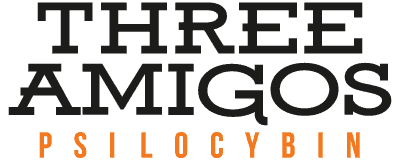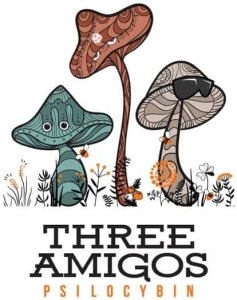Microdosing mushrooms for PTSD: What are the latest studies saying
Post-Traumatic Stress Disorder (PTSD) affects millions worldwide, often stemming from traumatic events such as military combat, sexual assault, or natural disasters. Traditional treatment methods typically involve psychotherapy, cognitive-behavioral therapy (CBT), and pharmacological interventions.
However, the emergence of psychedelic substances like psilocybin, found in mushrooms for PTSD, has sparked interest in exploring alternative therapies.
Recent studies investigating microdosing mushrooms for PTSD have opened new avenues for treatment, potentially providing relief where conventional therapies have fallen short.
Understanding microdosing and PTSD
Microdosing involves consuming sub-perceptual doses of psychedelics, allowing individuals to experience therapeutic benefits without the intense hallucinations or alterations in perception associated with higher doses.
This approach aims to harness the neuroplasticity and emotional processing enhancements offered by psychedelics while minimizing potential side effects.
As a result, microdosing for PTSD has garnered attention for its potential to alleviate symptoms such as anxiety, depression, and intrusive memories.
How microdosing affects the brain
The therapeutic potential of microdosing mushrooms for PTSD lies in their ability to induce significant neurobiological changes.
Research suggests that psychedelics, including psilocybin, promote neuroplasticity – the brain’s capacity to form and reorganize synaptic connections. This adaptability is crucial for individuals dealing with PTSD, as it allows them to break free from entrenched patterns of thought and behavior that are often tied to traumatic experiences.
One critical mechanism involves the modulation of serotonin receptors, particularly the 5-HT2A receptor. Psilocybin binds to these receptors, which are involved in mood regulation and emotional processing.
This binding can lead to heightened emotional awareness, enabling individuals to confront and process feelings associated with their trauma more effectively.
Additionally, the alteration of default mode network (DMN) activity can lead to a decrease in self-referential thought, helping individuals detach from their traumatic memories and view them from a more objective perspective. This can ultimately result in reduced symptoms of anxiety, hypervigilance, and emotional dysregulation commonly experienced by those with PTSD.
Furthermore, microdosing may enhance connectivity between different brain regions, allowing for improved emotional regulation and resilience. By promoting a state of openness and creativity, individuals may find it easier to explore and integrate their traumatic experiences into their narratives, facilitating healing.
Latest findings on microdosing for PTSD
Recent studies highlight the potential of microdosing mushrooms for PTSD.
One analysis from Smithsonian Magazine discusses how psychedelic substances can promote emotional healing by fostering a sense of connection and enhancing personal insight.
Research indicates that psychedelics may help individuals confront their trauma by allowing them to process emotions that have long been suppressed. The ability to access these deep emotional layers is particularly crucial for those with PTSD, who often struggle to revisit their traumatic experiences in a safe and supportive environment.
Another notable study explores the effectiveness of psychedelics in creating new pathways for emotional healing.
It discusses how the use of psilocybin can facilitate the processing of traumatic memories, helping individuals to confront and integrate their experiences in a supportive environment.
This approach contrasts with conventional PTSD therapies, which typically involve gradual exposure to traumatic memories and can sometimes exacerbate symptoms. The findings suggest that microdosing for PTSD may allow individuals to engage with their trauma more gently, promoting healing without overwhelming emotional distress.
Additionally, another resource indicates that while psychedelics are still being studied, initial evidence supports their potential in enhancing psychotherapy.
This could lead to more effective treatment modalities that combine the benefits of microdosing with established therapeutic practices, paving the way for innovative approaches to PTSD treatment.
As the field progresses, further research will be essential to validate these findings and develop safe, effective protocols for utilizing psychedelics in therapeutic contexts.
Comparing microdosing to traditional PTSD therapies
When comparing microdosing PTSD to traditional PTSD therapies, the differences in approaches are significant.
Conventional treatments, such as cognitive-behavioral therapy (CBT), rely on gradual exposure to traumatic memories in a controlled setting, which can sometimes provoke intense emotional distress. While effective for many, these methods can be met with resistance from individuals who find revisiting their trauma overwhelming.
In contrast, the microdosing mushrooms for PTSD approach may facilitate a gentler re-engagement with traumatic memories.
By enhancing neuroplasticity and emotional insight without the full psychedelic experience, microdosing may allow individuals to process their trauma in a less intimidating manner. Additionally, traditional pharmacological treatments often come with a range of side effects, including dependency, weight gain, and emotional numbing.
In contrast, the findings suggest that microdosing might offer a more holistic approach, focusing on emotional healing without the adverse effects commonly associated with antidepressants and anti-anxiety medications.
The future of microdosing and PTSD treatment
As the research on mushrooms and PTSD evolves, there is hope for a paradigm shift in how PTSD is treated.
While psychedelics like psilocybin are still in the experimental stages for PTSD treatment, their potential is considerable. The growing body of research suggests that microdosing mushrooms may play a significant role in the future of mental health treatment, particularly for individuals who have not found relief through traditional methods.
Current studies provide a framework for understanding how psychedelics can offer new avenues for emotional processing and healing.
However, it’s crucial to approach this emerging field with caution and to conduct further research to better understand the long-term effects and safety of microdosing as a therapeutic practice.
Conclusion
In conclusion, microdosing for PTSD presents an exciting frontier in the treatment of this challenging disorder. Recent studies underscore the potential of microdosing mushrooms for PTSD to provide emotional healing and rewire the brain’s responses to trauma.
As research continues to evolve, combining insights from traditional therapies with innovative psychedelic approaches may pave the way for more effective and compassionate treatments for those affected by PTSD.
For individuals seeking relief from their trauma, these emerging therapies offer a glimmer of hope in a landscape often marked by difficulty and despair.
James Sullivan is a writer for Three Amigos, specializing in natural remedies and mental health. An advocate for the therapeutic use of psilocybin, he combines his passion for writing with his love for the great outdoors.




